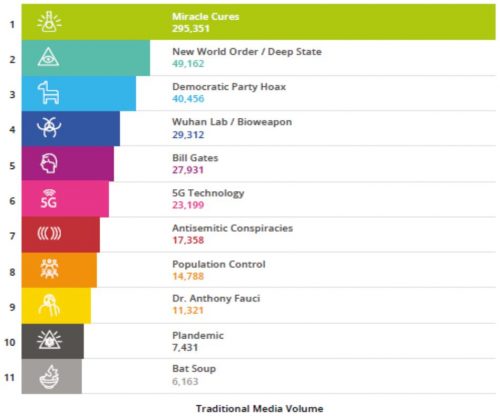January 20, 2021
Navigating the Infodemic

Information spreads like a virus. The explosion of COVID-19 information coming to us from all angles amplifies the difficulty of deciphering fact from fake. According to the World Health Organization (WHO), the Coronavirus disease (COVID-19) is the first pandemic in history in which technology and social media are utilized on a mass scale to help keep people safe, informed, productive, and connected. Despite the positive benefits, the technology also enables and amplifies an infodemic that continues to undermine the global response to control the pandemic. As we continue to discuss COVID-19 and the vaccine, the amount of false and harmful information is likely to increase.
There are three main categories of information spreading. Most factual information comes in fractional pieces that are usually true or based on some valid evidence. Misinformation is inaccurate information that harmfully misleads. Disinformation is false or inaccurate information, like misinformation, but purposely disseminated with the intent to cause harm and confusion.

A study from Cornell reviewed 38 million posts and publications in traditional English language mainstream media about COVID-19. The amount of misinformation discovered was roughly 2.5%, which equates to nearly 1 million individual publications containing misinformation. Overwhelmingly, the most common subject of misinformation found is miracle cures. I have read countless studies pointing to a COVID-19 “game-changer” in the last several months, with very few coming to fruition.
Over the next six months, we will see an enormous amount of scientifically sound vaccine information, but it’s anticipated that there will be a significant amount of misinformation and disinformation also published. Along these lines, an area that could be highly susceptible to misinformation/disinformation are reports of rare and severe side effects associated with COVID vaccines. Scams related to vaccine administration are also a potential problem, especially while vaccine availability is limited. Clinicians and the general public need to be very aware and careful.
Seven Tips from the World Health Organization to Navigate the Infodemic.
Assess the source. When you see stories from unknown sources, be extra discerning. Make sure you identify who shared the information and where it originated. Vet the source, even if from friends and family.
Go beyond the headline. Headlines are often intentionally sensational or provocative. People frequently share the headline but often don’t take the time to read the actual article. Sometimes, the headlines are very misrepresentative of what the article says.
Identify the author. Search the author or subject expert online to see if they are real and/or credible. Also, identify if the author qualifies the topic and discussions in reference. Research the stories and ask, “Why is this person always in the news talking about COVID-19?” “Are they qualified to discuss COVID-19?” “Do they have experience in viruses or critical care?”
Check the date. Is the information up to date and relevant to current events? Has a headline, image, or statistic been used out of context? Numerous friends, family, and colleagues have sent me articles from March asking, “Is this true?” A lot of information published at the start of the pandemic has no current application due to the velocity of how we are learning and understanding the disease.
Examine the supporting evidence. Remember, credible stories back up their claims with facts. I tell all clinicians to go right to the study when reviewing information. If somebody quotes a study in an article or piece of information, find the research, and understand it. If you’re not a clinician, still read the supporting evidence. If someone makes claims using data, you should check the reference of the study, and if you can’t find the connection, you should be dubious of the veracity of that set of information.
Check your own biases. Think about whether your own biases could affect your judgment on what is or is not trustworthy. A confirmation bias is the strongest bias that I’ve seen regarding COVID-19. We tend to give credence to things that we already believe. If you think that something is a hoax, any news that says it’s a hoax will be a heavier influence on your reasoning, no matter what the disputing source says to debunks that belief. Try to look at the total evidence to acquire more balance.
Turn to fact-checkers. Consult trusted fact-checking organizations, such as the International Fact-Checking Network and global news outlets focused on debunking misinformation. There are many sources of information that accurately check the facts and giving you the full story. However, a lot of misinformation and disinformation can be quickly debunked by merely checking the facts.
As you navigate this Infodemic, don’t forget to refrain from sharing information without having confidence that it’s helpful and has some foundation to it. It is our responsibility to not only validate information as factual but to avoid sharing misinformation and disinformation. By assessing the source, going beyond the headline, identifying the author, checking the date, examining evidence, checking your own biases, and turning to fact-checkers, we can stop the spread of inaccurate and harmful information.
Additionally, Sound Physicians has collected a considerable amount of COVID-19 resources and published them here. Make sure you check out these helpful resources for clinicians and healthcare professionals.
